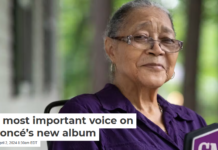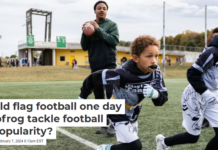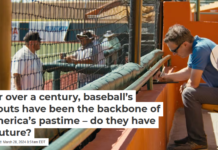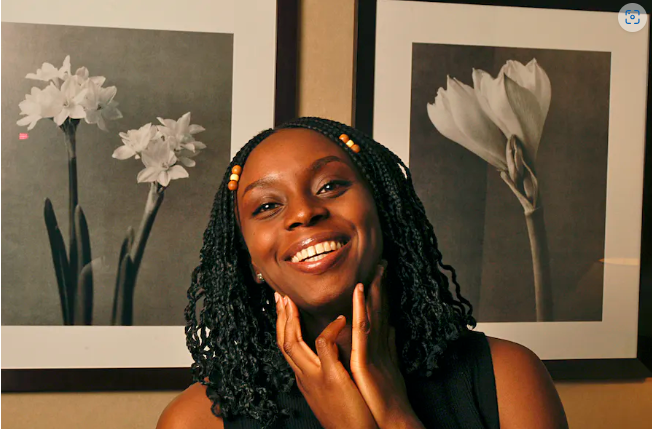

Simon Lewis, College of Charleston
Twenty years ago, in October 2003, 26-year-old Nigerian author Chimamanda Ngozi Adichie burst onto the North American publishing scene with her debut novel,“ Purple Hibiscus.”
Since then, Adichie’s literary fame has only grown: She’s published two more novels and a collection of short stories, while two of her TED talks have garnered tens of millions of views. In September 2023, she published her first children’s book – a joyful celebration of mother-daughter love – under the nom de plume Nwa Grace-James.
But the October 2003 publication of “Purple Hibiscus” didn’t just signal the start of a single author’s brilliant career. It also forged a path for a whole new generation of African novelists who had come to America as immigrants or students and who have been mining that experience in their writing.
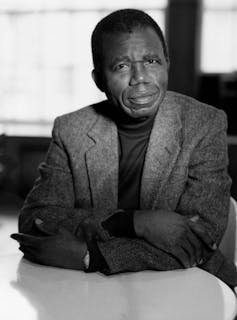
The struggles to get published by prior generations of African authors are almost legendary. Thirty years apart, Chinua Achebe and Tsitsi Dangarembga have both described how close their manuscripts of “Things Fall Apart” (1958) and “Nervous Conditions” (1988) came to being lost. Achebe’s only copy of the manuscript was a handwritten draft. He sent it to a typing agency in London that nearly dismissed it as a joke. Dangarembga’s manuscript sat unread in the basement of a British publishing house for years. Only when the writer stopped by the offices during a work trip to London did the editors agree to read it.
Through attending American MFA programs, however, Adichie and her contemporaries were able to tap into the networks of agents and found their work snapped up by American publishers.
Writers born in Africa who studied at American universities – Teju Cole, Yaa Gyasi, Uzodinma Iweala, NoViolet Bulawayo and Akwaeke Emezi, to name just a few – have followed in Adichie’s footsteps.
“Purple Hibiscus” has been to these writers what Gabriel García Márquez’s “One Hundred Years of Solitude” (1967) was to aspiring Latin American writers during the Latin American literary boom of the 1960s and 1970s, and what Salman Rushdie’s “Midnight’s Children” (1981) was to the proliferation of Indian writers in English from the 1980s on.
While it would be reassuring to think that the current surge of African novelists represents a wider American interest in all things African, the success of these novels may also have to do with the fact that so many are actually set in the U.S.
The recurrent theme of immigration to the U.S. gives many of these works direct – and instructive – relevance to U.S. readers. As Black outsiders in the U.S., African immigrants have a particularly acute insight into the way race and racism affect daily life in this country. One of the common features of these novels is the way in which they explore the tension of racial solidarity and mutual misunderstanding between African immigrants and Black Americans.
When I first started teaching African literature, I often had difficulty finding books in print. Now my problem is deciding who to leave out of my syllabus. Here is a very brief list of some of the books that I would consider must-reads.
1. Chimamanda Ngozi Adichie, “Americanah” (2013)
As its title suggests, Adichie’s fourth novel, “Americanah,” is arguably the definitive novel of contemporary African immigration to America.
It tells the story of Ifemelu, a young Nigerian woman overstaying her student visa, and how she negotiates the new Black identity forced on her by the blunt instrument of American race-construction.
In a brilliant metafictional move, Adichie has Ifemelu achieve internet fame by writing a blog dedicated to non-American Blacks: “Dear Non-American Black,” Ifemelu writes, “when you make the choice to come to America, you become black. Stop arguing. Stop saying I’m Jamaican or I’m Ghanaian. America doesn’t care. So what if you weren’t ‘black’ in your country? You’re in America now.”
Ifemelu’s experience of racism is simultaneously hurtful and baffling to her. On the one hand, her illegal status makes her both psychologically and physically vulnerable. But at times American racism is almost comical; Ifemelu doesn’t understand why an innocent reference to eating watermelon might be misconstrued, for instance, and she is totally bewildered by a shop assistant’s attempt to avoid distinguishing between two shoppers by reference to their skin color.
2. Yaa Gyasi, “Homegoing” (2016)
Ghanaian-born Yaa Gyasi’s debut novel takes the form of a series of skillfully interwoven stories set on either side of the Atlantic.
Beginning with two half sisters, Effia and Esi, in the Gold Coast in the middle of the 18th century, the stories trace the two sets of the sisters’ descendants through six subsequent generations in West Africa and the U.S. In the final two stories we meet the young teenager Marjorie, who, as the American-born daughter of Ghanaian parents, struggles to come to terms with her identity as one of Ifemelu’s “Non-American Blacks.” She finds herself ostracized by her Black classmates for “acting white” but is unable to enjoy a normal relationship with a white classmate. One of the only Black teachers at her high school tells her, “You’re here now, and here black is black is black.”
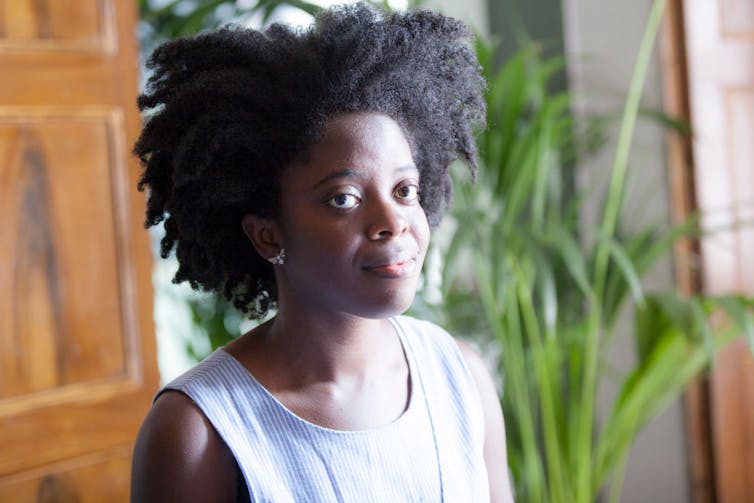
3. NoViolet Bulawayo, “We Need New Names” (2013)
When “We Need New Names” appeared, Nigerian novelist Helon Habila accused NoViolet Bulawayo of peddling “poverty-porn” by pandering to American stereotypes of Africa.
However, for Bulawayo’s teenage protagonist Darling, it’s American culture that is dangerously dysfunctional – and personally discombobulating. Darling finds American high school ridiculously easy, is horrified by the laxness of American parenting and is generally unimpressed by the urban blight she sees around her in the city she calls Destroyed, Michigan.
Late in the novel, her mentally ill countryman Tshaka Zulu is shot to death by police when off his meds and ranting in his home language. You might think that such a violent, tragic event would be a major plot driver. Sadly, it seems to exemplify just one more random peril – little different from being hit by a car or struck down by cancer – that many Africans coming to America have to endure.
4. Uzodinma Iweala, “Speak No Evil” (2018)
Even wealth and class status offer no protection from such perils.
In Uzodinma Iweala’s “Speak No Evil,” the main character, Niru, is the high-achieving son of high-achieving Nigerian parents in supposedly cosmopolitan Washington, D.C. The first three-quarters of the book appear to be exploring Niru’s dilemma: how to come out as gay to his conservative parents.
It turns out that Niru’s gayness – an invisible characteristic, after all – is not the problem; his Blackness is. When he gets in a row outside a bar with his best friend, Meredith – an equally well-off, well-connected, high-flying white female classmate – someone calls the cops. In the space of a paragraph the inevitable has happened: Shots are fired. “You’re safe,” someone says to Meredith. “He can’t hurt you.”
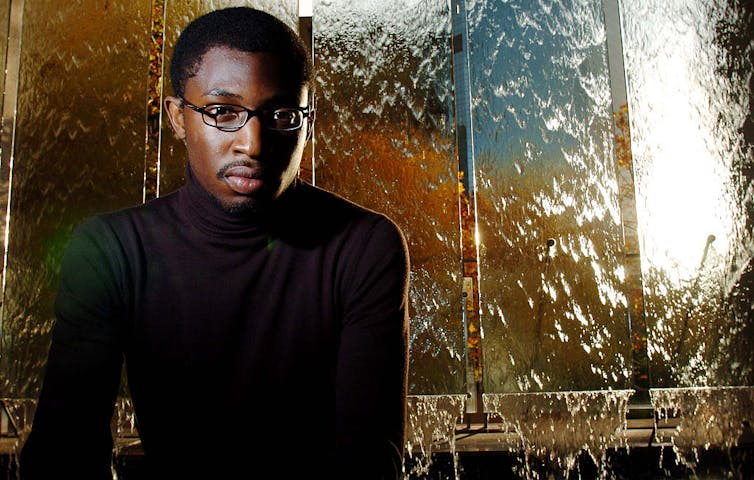
By extraordinary coincidence, Adichie grew up in the very house that Chinua Achebe had lived in on the campus of the University of Nigeria in Nsukka. She, and the other writers of her generation, grew up in the house of fiction that Achebe and his generation established. The writers of that older generation were concerned with the material and cultural despoliation of colonialism. In Achebe’s words, their task was to let their African readers know “where the rain began to beat” them.
Today’s African writers demand readers’ attention by letting them know that for African and African-descended people in the U.S., although the winds may have shifted, the storm is far from over.
Simon Lewis, Professor of English, College of Charleston
This article is republished from The Conversation under a Creative Commons license. Read the original article.




